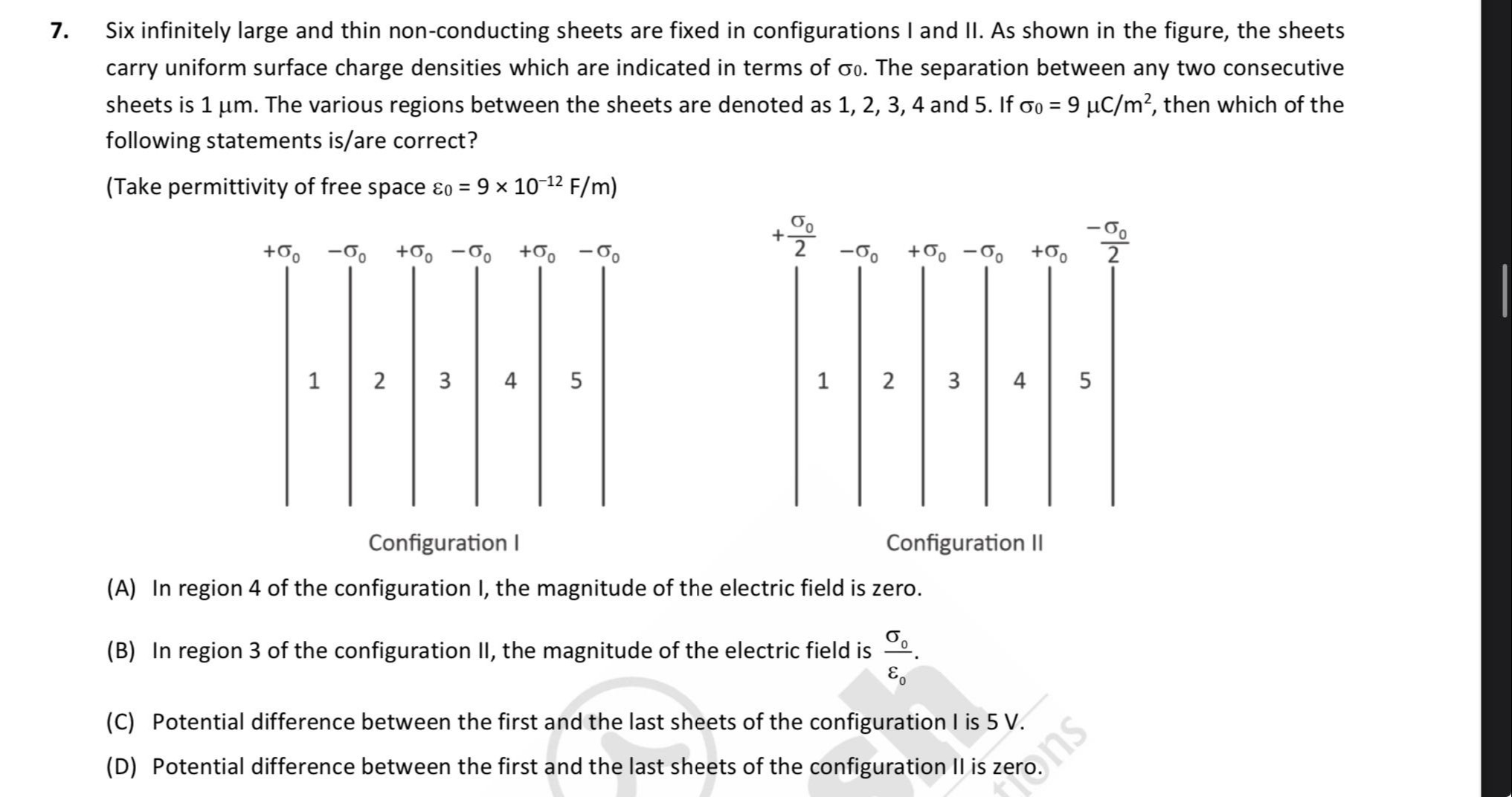Question
Question: Six infinitely large and thin non-conducting sheets are fixed in configurations I and II. As shown i...
Six infinitely large and thin non-conducting sheets are fixed in configurations I and II. As shown in the figure, the sheets carry uniform surface charge densities which are indicated in terms of σ₀. The separation between any two consecutive sheets is 1 µm. The various regions between the sheets are denoted as 1, 2, 3, 4 and 5. If σ₀ = 9 µC/m², then which of the following statements is/are correct?
(Take permittivity of free space ε₀ = 9 × 10⁻¹² F/m)

In region 4 of the configuration I, the magnitude of the electric field is zero.
In region 3 of the configuration II, the magnitude of the electric field is ε0σ0.
Potential difference between the first and the last sheets of the configuration I is 5 V.
Potential difference between the first and the last sheets of the configuration II is zero.
B
Solution
The electric field due to an infinitely large thin sheet with uniform surface charge density σ is E=2ϵ0∣σ∣, directed away from the sheet for positive σ and towards the sheet for negative σ.
Configuration II, Region 3 Analysis:
In region 3 of configuration II, the electric field is calculated by summing the contributions from all five sheets. Sheets 1, 2, and 3 are to the left of region 3, while sheets 4 and 5 are to the right.
EII,3=2ϵ0σ1′(1)+2ϵ0σ2′(1)+2ϵ0σ3′(1)+2ϵ0σ4′(−1)+2ϵ0σ5′(−1)
EII,3=2ϵ01(2σ0−σ0+σ0+σ0+2σ0)=2ϵ01(2σ0)=ϵ0σ0.
Therefore, the magnitude of the electric field in region 3 of configuration II is ϵ0σ0.
